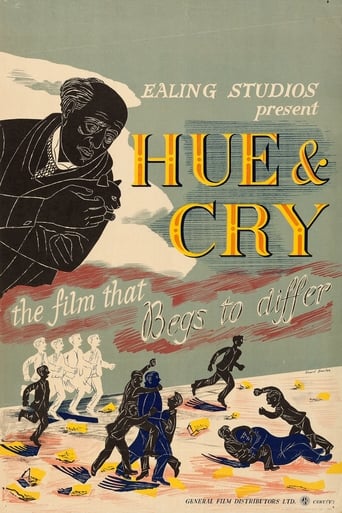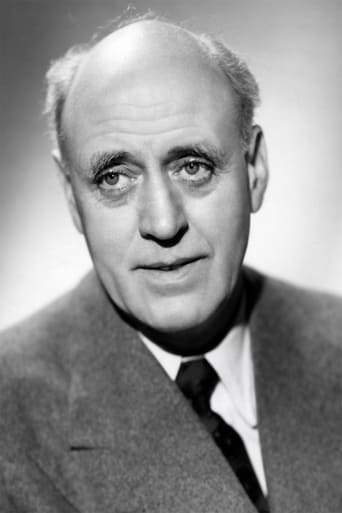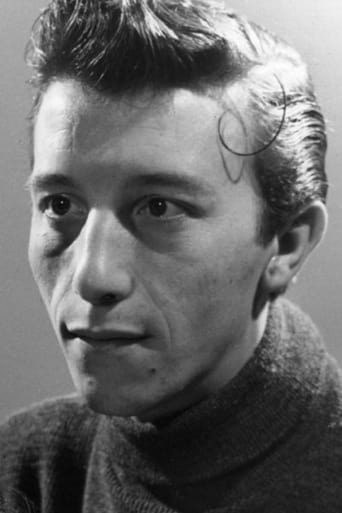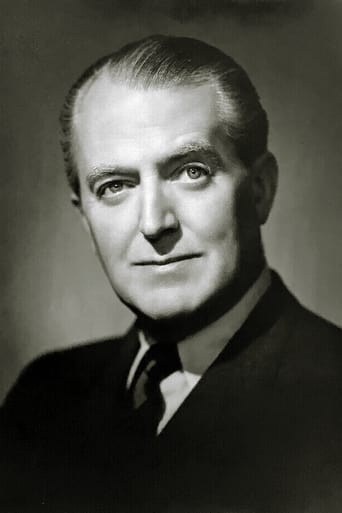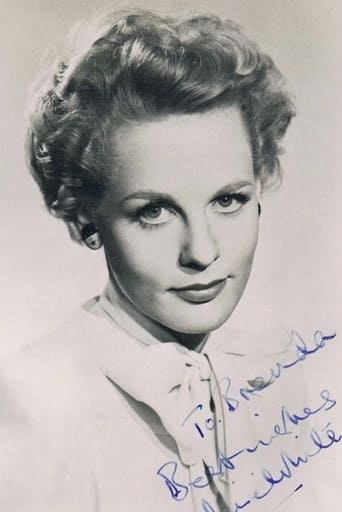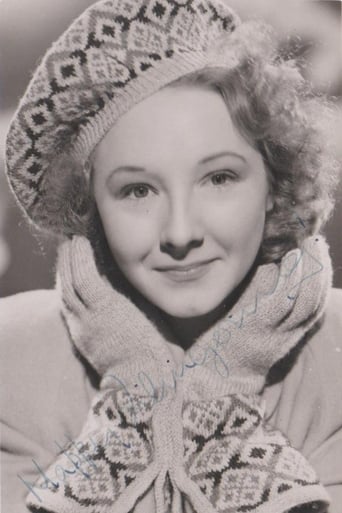A gang of street boys foil a master crook who sends commands for robberies by cunningly altering a comic strip's wording each week, unknown to writer and printer. The first of the Ealing comedies.
Reviews
Best movie of this year hands down!
It is not deep, but it is fun to watch. It does have a bit more of an edge to it than other similar films.
Good films always raise compelling questions, whether the format is fiction or documentary fact.
A clunky actioner with a handful of cool moments.
HUE AND CRY is the first of the classic comedies made by Ealing Studios although the comedy is in short supply here as this becomes more of a juvenile detective/adventure story involving a group of kids thwarting a gang of crooks who plan their next jobs using a serialised story in a comic. It sounds far-fetched and it is, but at the same time it's a lot of riotous fun.Overall, HUE AND CRY feels much like one of the classic Enid Blyton detective stories, except done with a harder edge. Indeed, there's quite a bit of action here in the form of fisticuffs and chase scenes and it's quite hard-hitting despite the protagonists being kids. The plot is fast-paced and engaging and the film evokes a wonderful sense of place as we see the kids playing in the post-war bombed out ruins that littered British cities during the era. As ever, Alastair Sim contributes a memorable supporting role.
Like some other reviewers I first saw H and C at the now long-forgotten Saturday morning pictures and it was thoroughly enjoyed by just about everyone there. Such a refreshing change from the usual feature films they dredged up for us, most of which seemed to date from the early thirties and to be based om motor racing.Having seen it many times since it's difficult now to know what I remember from that first time but I do recall the remark of the sadly missed Joan Dowling when they first descended into the sewers, "Coo, dunnit pong", causing great hilarity. Easily pleased or what? Much as I enjoyed reading the reviews here I have to take issue with some. One claims that the lack of swearing among the boy gang indicated some sort of superior morality back in 1946. Actually it was because bad language was simply not permitted in films then and I can assure everyone that in real life there would have been plenty. Another stated that Anthony Newley was in it. He wasn't. I think the reviewer was fooled by the Newley-like looks of Roy, played by Stanley Escane. And a third thinks that jumping on the stomach of the chief villain and killing him was a bit strong. I saw the film recently and there is no indication that he was killed, merely winded. It was perhaps unpleasant but if anything the scene where the bent cop was catapulted and stunned was worse. That could have killed or blinded him.I was more interested in the review by Robert Temple. I have nothing against the gentleman and he is entitled to his opinion but I feel that some of his comments are misguided and on occasion just plain wrong. He seems for example to read into H and C, with its use of bomb sites and derelict buildings, some sort of metaphor for WWII but I think he's reading too much into this. The film was made on location in London in 1946 when the makers would have been hard put to it not to include bomb sites. They were an unavoidable backdrop to the action, not a part of it, though as they existed use was made of them. The film is simply no more than what used to be called a rattling good yarn and thankfully does not contain any 'messages'.Further, amid what I have to say is a welter of name dropping, Mr Temple not only (wrongly) thinks that some of the action takes place in Tilbury but also makes a glaring geographical error in placing Tilbury in the East End despite its position in Essex some 12 or 13 miles from the fringes of the East End at East Ham. While there is certainly a Chadwell (St Mary) in Tilbury this is similarly miles from the scene of the action at the end of the film which is, officially at any rate, at Wapping and I suspect that Mr Temple has confused Chadwell with Shadwell, which is next door to Wapping and therefore does come within the East End.
This comedy centres on the young Harry Fowler and chums as an astute lad in postwar London. Among the ruins of such, the film vividly captures that era and of course engaging British stereotypical 'urchins' with their scruffbag looks and grey shorts!Jack Warner excellently departs from his famous 'PC Dixon' role (although that was two years later) as a neat villain, coaxing Joe Kirby (Fowler) all along, when the unsuspecting oik is filling him in on what he's found - that of a criminal plot that actually involves Warner! The plot and help for the criminals has been found with clues printed in a comic called 'The Trump' that Joe and his chums studiously read and await with anticipation every week (Remember those days before computers?).On unmasking this plot, when Joe unknowingly, trusts Warner who then kidnaps him, the chums manage to 'shanghai' a radio station microphone and set out the call: "Calling all boys - go to (Can't remember location!) for an adventure!" the next scene shows boys dropping everything - literally, the boy drops his mum's shopping, another's about to kiss a girl and runs off, etc! Excellent scene! It turns out one of the comic's staff was obviously in on it, and there's a nice scene where the boys tie her up, and set out to torture her for the information - this isn't as bad as it sounds, they can't really bring themselves to be vicious, so she's seen being tickled by a feather on her feet! Not impressed or bothered at all, one of the boys brings out his mouse - and 'being a woman',she squeals in more ways than one! Although that sounds like an easy scene it was quite amusing! The 'boys' who do have a girl among them as I recall, are seen jumping the crooks, with fisticuffs in British style, with 'fists of tapioca' as reviewer/journalist Clive James once described hits to the face in Saturday morning cinema style! On that point, although the film is 61 years old, I saw this in the late 1960's at Saturday morning pictures and it's stuck in my mind ever since! Nice thought to carry to your deathbed of your own kindred youth!
Sometimes a film is worth it just because of an accident. In this case the accident is that the Germans (not the Nazis, the Germans) had decimated large parts of London, and we had that as a set for this little drama.Its a great little story too, perfect for this very successful notion of noir light.Its the old fold: writer writes and the fictional becomes real. The only concession to reality which incidentally allows it to be inserted into the noir world is that what the writer writes is tampered with on the way to the book.One scene toward the beginning is particularly nice, where a boy reading a comic sees the same thing in reality. I recommend "How to Murder Your Wife" as a much better entry in this minigenre. But this is good too. At least the first half. The second half (after the great, really great sewer scene) is a sort of noir Bowery Boys gets their man.Ted's Evaluation -- 3 of 3: Worth watching.
Top Streaming Movies












